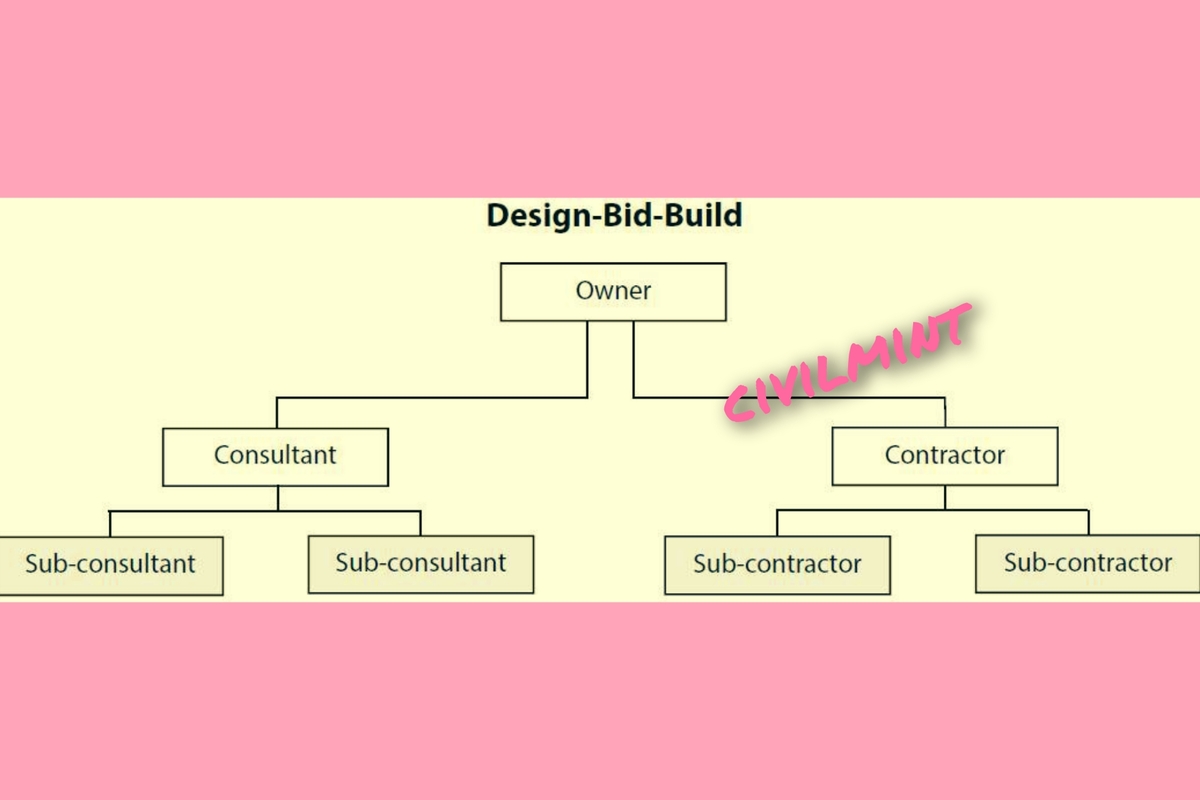In this post I will explain a very popular construction project delivery method called Design Bid Build. We will go through all the important things related to design bid build method.

Table of Contents
What Is Design Bid Build In Construction Projects?
Design Bid Build is a traditional and widely used method of project delivery. Under this approach, the owner appoints a consultant to design the project and prepare construction documents on their behalf.
The owner then calls for bids from the contractors and finally selects one to complete the construction.
This approach is popular among owners who prefer to maintain complete control over the project and the ability to actively participate in the process.
It also allows for refinement of designs before proceeding with the bidding and contracting phases. In addition, Design Bid Build is supported by well-established forms of contracts, laws and procedures.
How It Works
This process consist of 3 important phases. These are Design, Bid and Build.
Let’s understand these terms in simple way:
- Design – In this phase, an architect or design engineer works with the owner of the project to create a set of drawings that detail how the project will look and be built. The drawings are used by contractors to bid on the project.
- Bid – In this phase, contractors submit their bids to the owner based on the design documents. The bids include the cost of materials and labor for the project.
- Build – Once the owner selects a contractor, the construction phase begins. The contractor oversees the construction process and works with subcontractors to complete the project according to the design documents.
Advantages And Disadvantages Of The DBB Method.
Here are some advantages and disadvantages of the DBB method.
Advantages:
- Clear Distinction Between Teams: DBB maintains a clear distinction between the design team and the construction team, ensuring that each party stays in their own lane. This makes it easier to hold professionals accountable for missed deadlines or ballooning expenditures.
- Greater Transparency: Roles are more clear cut in the DBB method, allowing the project owner to enjoy greater transparency into the process. This can help to spot potential problems faster, leading to more timely and cost-effective solutions.
- More Opportunities for Fair Bidding: The bidding process is usually open to a wide set of professionals, and the public bidding window ensures competitive quotes. This is especially beneficial for large-scale public works projects, which require a fair and open bidding process.
- Encourages Professionals to Play to their Strengths: DBB allows designers and contractors to concentrate and build upon their niche, instead of trying to be all things to all people. This results in a higher level of expertise and specialization, leading to better quality outcomes.
Disadvantages:
- Possibility of Longer Timelines: Because the DBB method waits for each party to completely finish its tasks before moving on to the next one, the project might have a greater chance of being delayed. This can be problematic for projects with tight deadlines or those that require quick turnaround times.
- Challenging Construction Implementations: Not all designs are easily constructed. Keeping construction professionals divorced from the design process might encourage creativity, but sometimes challenging designs can’t be easily translated into finished projects. This can lead to expensive redesigns and rebids.
- Owner Bears Brunt of Project Challenges: Change orders, busted timelines, and other project challenges all fall on the owner’s shoulders as they develop two separate contracts–one with the designer and the other with the contractor. Since the owner supervises both parties, they are also responsible for the problems associated with each.
Summing Up
The DBB method has its advantages and disadvantages. While it offers greater transparency, encourages specialization, and fosters fair bidding, it can also lead to longer timelines, challenging construction implementations, and place a significant burden on the project owner.
Ultimately, it is up to the project owner to weigh the pros and cons and decide if the DBB method is the best approach for their project.
I hope you enjoyed this article. I you have any question, you can comment in the comment box.
Thanks For Reading!
Keep Learning!
GoodBy!
